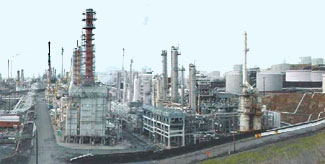Salmonella enterica: Difference between revisions
imported>Debra B. Sherman |
imported>Debra B. Sherman |
||
| Line 23: | Line 23: | ||
==Cell structure and metabolism== | ==Cell structure and metabolism== | ||
''S. enterica'' is a motile, rod shaped bacteria that contain flagella. | |||
==Ecology== | ==Ecology== | ||
Revision as of 20:24, 25 March 2008
Articles that lack this notice, including many Eduzendium ones, welcome your collaboration! |
Articles that lack this notice, including many Eduzendium ones, welcome your collaboration! |
Classification
Higher order taxa
Bacteria; Proteobacteria; Gammaproteobacteria; Enterobacteriales; Enterobacteriaceae
Species
Salmonella enterica
Description and significance
Salmonella enterica are rod shaped gram-negative bacteria. They are very commonly found in raw meat, chicken, and egg shells. Another one of its' habitats is in contaminated water. A famous example of one its' 2000 serovars is S. typhi, the cause of typhoid fever. Research done on the genomic sequencing of S. enterica can aid in the effectiveness of medications and vaccinations in treating disease. It is usually isolated on a selective medium such as Maconkey agar, XLD agar, XLT agar, or DCA agar.
Genome structure
Describe the size and content of the genome. How many chromosomes? Circular or linear? Other interesting features? What is known about its sequence? Does it have any plasmids? Are they important to the organism's lifestyle?
Cell structure and metabolism
S. enterica is a motile, rod shaped bacteria that contain flagella.
Ecology
Describe any interactions with other organisms (included eukaryotes), contributions to the environment, effect on environment, etc.
Pathology
How does this organism cause disease? Human, animal, plant hosts? Virulence factors, as well as patient symptoms.
Application to Biotechnology
Does this organism produce any useful compounds or enzymes? What are they and how are they used?
Current Research
Enter summaries of the most recent research here--at least three required
